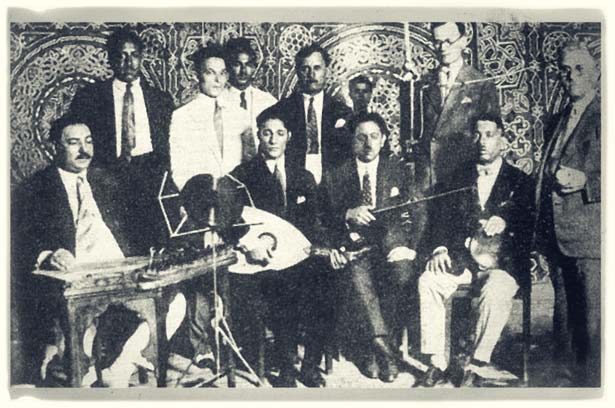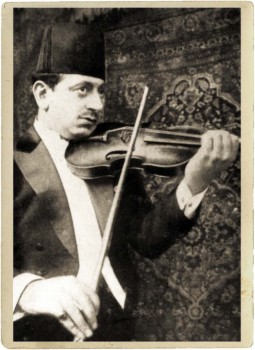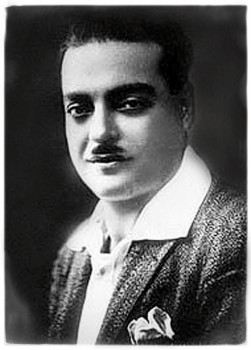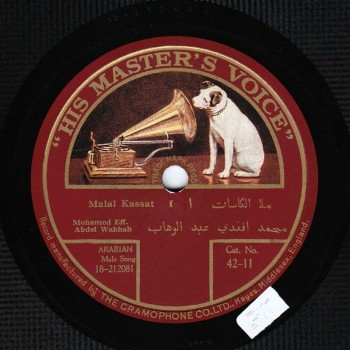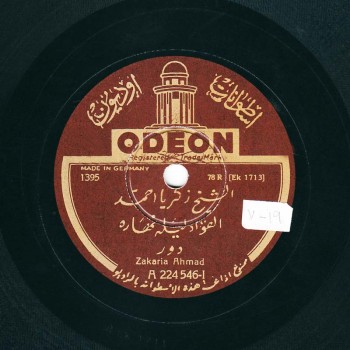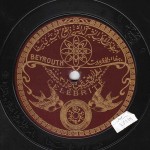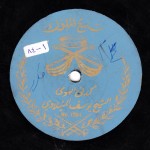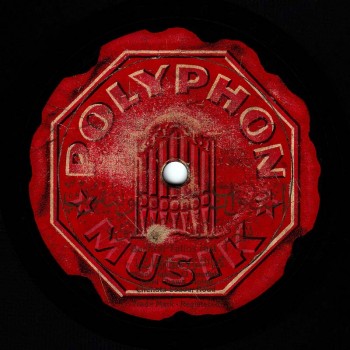 The rāst maqām is the first maqām and the basis of melodies in the maqām hierarchy and the melody scales of the Arabic musical system. Rāst is a Persian word that means straight or base. In the Abbasid era music books, this maqām was referred to by its Arabic equivalent mustaqīm (straight/upright/harmonious). This maqām is called rāst since the 14th century, even in books written in Arabic.
The rāst maqām is the first maqām and the basis of melodies in the maqām hierarchy and the melody scales of the Arabic musical system. Rāst is a Persian word that means straight or base. In the Abbasid era music books, this maqām was referred to by its Arabic equivalent mustaqīm (straight/upright/harmonious). This maqām is called rāst since the 14th century, even in books written in Arabic.
The scale of the rāst maqām:
Muḥammad Shahābiddīn’s book “Safīnat al-mulk wa nafīsat al-fulk” leads to the following conclusion: the scales of the rāst maqām are: yakāh, dūkāh, sīkāh, jahārkāh, banjkāh, shīshkāh, and hāftkāh. Each of these appellations is constituted by two words; yakāh is yak (one) and kāh (scale) –both Persian words–, dūkāh is dū (two) and kāh (scale), hāftkāh is hāft (seven) and kāh (scale). Translated into Arabic, their equivalents are: first scale, second scale, and so on. He also wrote that these modes became known by the new appellations added to them: rāst to/instead of the yakāh, nawā to/instead of the banjkāh, ḥusaynī to/instead of the shīshkāh, and awj to/instead of the hāftkāh. As for Muḥammad Kāmil al-Khula’ī, he stated that yakāh was the appellation given to the fourth key dropping from its previous position, thus creating between itself and the dūkāh a perfect fifth. This is the principle followed today. He added that nawā is not added to banjkāh, but used instead of it. The same goes for awj.
The nature and pattern of the rāst maqām:
Muṣṭafa Sa‘īd speaks of the nature and pattern of the rāst maqām saying:
The rāst maqām is joyful according to most theorists, as well as to the listeners who declare this maqām to be a source of joy and happiness. There was even a saying “When darkness descends upon you, play some rāst”, meaning play to the rāst maqām. Besides its joyful (or otherwise) nature, this maqām can be played to in many ways, –whether happy, sad, or otherwise– depending on the required result. As to the melodic pattern, –and this may be the fact that positioned the rāst maqām in the lead of all other maqāmāt– its first half is the same as its second half. For example…
They are the same.
And playing it can start with any of its scales: it can start with the qarār.
The Turks say that it must start with the jahārkāh followed by the nawā then down to the rāst.
…etc.
Going up and down in this maqām does not cause any changes. It is possible for example to change the scale while going down, its first position being here…
But it is not a must.
We will now listen to instrumental and vocal samples of improvisations and compositions made to the rāst maqām –from the library of AMAR–. The first improvisation sample we will listen to is a rāst taqsīm played on the ‘ūd by Muḥammad al-Qaṣṣabjī. It was recorded on one side of a 27cm record before 1920 by Odeon –following this German record company’s return to the Egyptian market after WW1–, order # X 47597, matrix # EX 2497.
Let us now listen to a sample of a fusion between set composition and improvisation: muwashshaḥ “Malā al-kāsāt” sang by Muḥammad ‘Abd al-Wahāb, composed by Muḥammad ‘Uthmān. It was recorded before 1924 by “His Master’s Voice” –daughter company of Gramophone–, order # 18-212081 and 18-212082, matrix # BD 4514 and BD 4515.
There are sub-maqāmāt derived from each original maqām. Such as the following sub-maqāmāt derived from the rāst: suznak rāst, nawrūz rāst, kurdān rāst, dulnashīn and suzdalārā. We will dedicate an episode to discuss these sub-maqāmāt and the process that led to their generation from the original maqām by putting different maqāmāt together, and also to discuss their different patterns. The works we have listened to and those we will listen to illustrate the relation between the original maqām and its sub-maqāmāt and neighbouring maqāmāt.
Let us now listen to Sāmī al-Shawwā, ‘Abd al-Ḥamīd al-Quḍḍābī and Shḥāta Sa‘āda playing “Ṭātyūs Afandī” to the bashraf rāst, recorded around 1930 by Polyphone on two sides of an electric-power printed 25cm record, order # B 50635 and B 50636, matrix # 571 BN and 572 BN.
We will end this episode with dawr “El-fu’ād lēluh nhāruh” written by Aḥmad ‘Aṭiyya, composed and sang by Sheikh Zakariyyā Aḥmad. It was recorded around 1935 by Odeon on two sides of an electric-power printed 25cm record, order # A 2245461 and A 2245462, matrix # EK 1713 and EK 1714.
Thank you for listening.
We will meet again in the next episode of “Our Musical System”.
- 221 – Zakariyya Ahmed – 12 (1/9/2022)
- 220 – Zakariyya Ahmed – 11 (1/9/2022)
- 219 – Zakariyya Ahmed – 10 (11/25/2021)
- 218 – Zakariyya Ahmed – 9 (10/26/2021)
- 217 – Zakariyya Ahmed – 8 (9/24/2021)
- 216 – Zakariyya Ahmed – 7 (9/4/2021)
- 215 – Zakariyya Ahmed – 6 (8/28/2021)
- 214 – Zakariyya Ahmed – 5 (8/6/2021)
- 213 – Zakariyya Ahmed – 4 (6/26/2021)
- 212 – Zakariyya Ahmed – 3 (5/27/2021)
- 211 – Zakariyya Ahmed – 2 (5/1/2021)
- 210 – Zakariyya Ahmed – 1 (4/28/2021)
- 209 – W-al-Lāhi lā astaṭī‘u ṣaddak 2 (4/6/2017)
- 208 – W-al-Lāhi lā astaṭī‘u ṣaddak 1 (3/30/2017)
- 207 – Bashraf qarah baṭāq 7 (3/23/2017)

